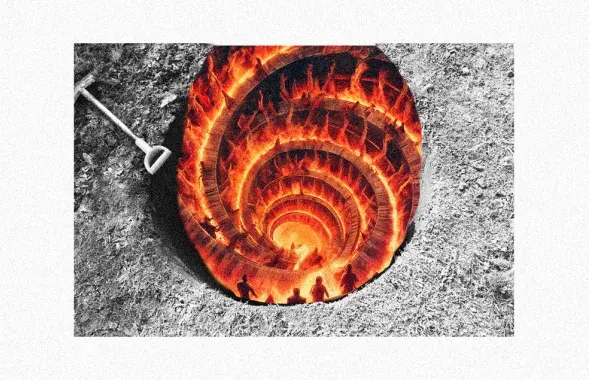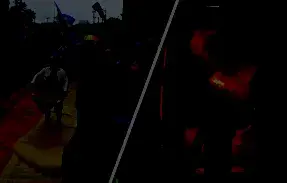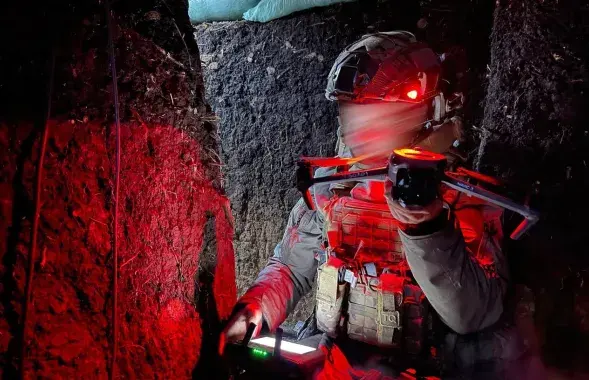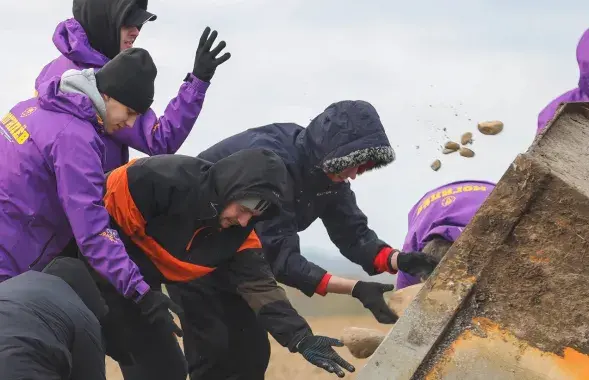Germany marks Berlin Wall fall (pictures)
On November 9 Germans recalled their past at the Stasi museum and redestroyed the Berlin Wall to mark 20 years since the country was reunited. The European Radio for Belarus was there to cover the event. The destruction of the Berlin Wall on November 9, 1989 united not only two parts of the same city. The wall between the two different systems was broken, shocking many people from the Eastern Germany who saw things that were a daily routine in the capitalist West. For instance, the standards of the Western journalism for their colleagues from the Socialist bloc, according to Manfred Protze, a vice president of the German Union of Journalists. He says:
“It was with a surprise to have learned that naked women's breasts could be newsmakers. But even if this could be somewhat accepted, many professionals have still been amazed that a divorce of two famous actors can also be a breaking news”.
Journalist Tomas Franke recalls that this made Western German journalists arrogant against their colleagues from the East. But, this situation was sorted out in the past 20 years.
“A new generation has emerged, and it does not differentiate between the East and the West. I think we were very lucky in Germany -- compared to any other country in transition in Europe. Those nations that are part of the Eastern Partnership program today have much more complex conditions”.
But problems still remain for all the journalists in Germany, says Manfred Protze.
“It is becoming more difficult to ensure high material and social standards for journalists. There is pressure on journalists who wish to report on certain companies. The quality of stories is going down. This is the result of staff axing. The crisis hits journalists and the civil society in the same way”.
Despite all the problems, the German journalists agree that the destruction of the Berlin Wall gave them a freedom of speech.
And the main result was the fall of Stasi, the German version of the KGB. According to reports, one in four Germans was linked with this security organization, Barbara Zim from the Stasi Museum told the European Radio for Belarus.
6 million files were found in the Stasi archives, including 4 million for GDR citizens and 2 for nationals from the capitalist countries. It is not known how many documents were destroyed by the Stasi. Barbara says that when people seized the buildings that belonged to Stasi they saw the paper-cutting machines broken because they could not destroy a huge number of papers in a very short period of time.
The central command of Stasi employed 10,000 officials. There were 91,000 official agents and 189,000 unofficial informants. But none of the former operatives has been held accountable. Three Stasi officers were convicted but not for their "professional" duties.
Stasi archives are open for everyone today. Many people come to the Stasi museum to find out what the security services had on them. Former Stasi operatives visit the museum as well.
The Domino which symbolizes the Berlin Wall
“It was with a surprise to have learned that naked women's breasts could be newsmakers. But even if this could be somewhat accepted, many professionals have still been amazed that a divorce of two famous actors can also be a breaking news”.
Journalist Tomas Franke recalls that this made Western German journalists arrogant against their colleagues from the East. But, this situation was sorted out in the past 20 years.
“A new generation has emerged, and it does not differentiate between the East and the West. I think we were very lucky in Germany -- compared to any other country in transition in Europe. Those nations that are part of the Eastern Partnership program today have much more complex conditions”.
But problems still remain for all the journalists in Germany, says Manfred Protze.
“It is becoming more difficult to ensure high material and social standards for journalists. There is pressure on journalists who wish to report on certain companies. The quality of stories is going down. This is the result of staff axing. The crisis hits journalists and the civil society in the same way”.
Despite all the problems, the German journalists agree that the destruction of the Berlin Wall gave them a freedom of speech.
And the main result was the fall of Stasi, the German version of the KGB. According to reports, one in four Germans was linked with this security organization, Barbara Zim from the Stasi Museum told the European Radio for Belarus.
6 million files were found in the Stasi archives, including 4 million for GDR citizens and 2 for nationals from the capitalist countries. It is not known how many documents were destroyed by the Stasi. Barbara says that when people seized the buildings that belonged to Stasi they saw the paper-cutting machines broken because they could not destroy a huge number of papers in a very short period of time.
The central command of Stasi employed 10,000 officials. There were 91,000 official agents and 189,000 unofficial informants. But none of the former operatives has been held accountable. Three Stasi officers were convicted but not for their "professional" duties.
Stasi archives are open for everyone today. Many people come to the Stasi museum to find out what the security services had on them. Former Stasi operatives visit the museum as well.
The Domino which symbolizes the Berlin Wall


















